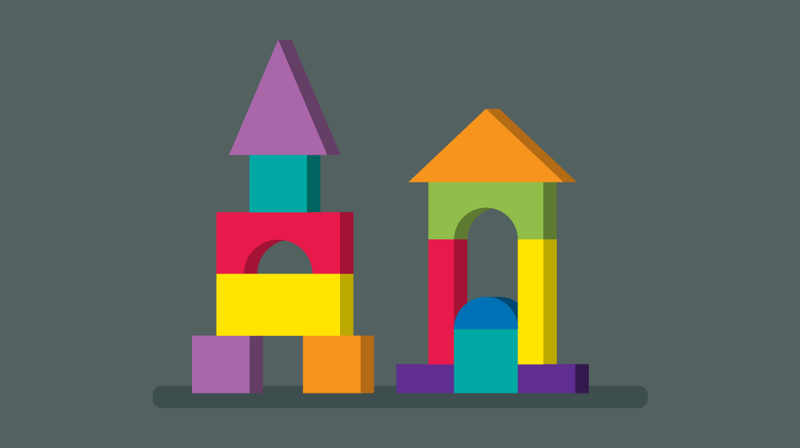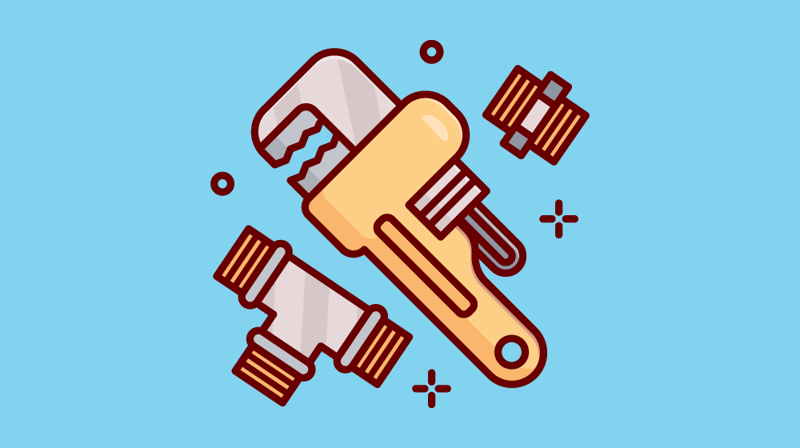Certain cognitive processes are critical to success in any profession and are found in many competency frameworks. The top two I have in mind are creativity and innovation.
Although the two terms are often used interchangeably, creativity and innovation are not synonymous.
Creativity refers to unleashing the potential of the mind to conceive new ideas. For example, a creative group would produce many original programming ideas during a brainstorming session about orientation. But, if you and your coworkers were to merely suggest a lot of ideas — no matter how many — that recycle last year’s activities, then you’re not being creative; you’re just good at compiling a list.
Innovation, on the other hand, involves identifying unmet needs within an organization, customer base, or community and applying creative resources to design an appropriate solution. Shawn Hunter, the author of Out Think: How Innovative Leaders Drive Exceptional Outcomes, defines innovation as “the implementation or creation of something new that has realized value to others.”
It’s important to understand that creativity can happen without innovation but not vice versa. Theodore Levitt, an award-winning author of several books about innovation in business, sums up the difference this way:
“What is often lacking is not creativity in the idea-creating sense but innovation in the action-producing sense, i.e. putting ideas to work.”
To go back to the program-planning example, all of that creativity should be actualized into an innovative program. Innovation here might involve using a campus venue in a way that it has not been used before (like setting up a mini-golf course in the library) or creating a unique method for engaging students (such as asking students to paint a portion of a mural that will be hung in the student union).
Now that you understand the difference between a creative and innovative mindset, what’s next? This post is full of ideas for programs and resources that you can design and facilitate to empower students to be more creative and bring innovative initiatives to your campus.
Think Tanks
A think tank is a group composed of experts brought together to provide advice or ideas for solving a specific problem.
Let’s say that your campus has been struggling to market events to students in ways other than flyers and social media posts. You could create a think tank made up of student leaders who are in charge of marketing for their clubs and organizations. Task the group with proposing unique marketing methods to soon try out.
In regards to the think tanks design, there are several options you can consider beyond a traditional roundtable discussion.
One such method is the User Experience Fishbowl. The fishbowl consists of an inside circle of people who are directly impacted by the problem (such as the marketing coordinators) and an outside circle of people who are only indirectly affected by the issue (such as other student leaders).
Have the inside circle discuss their experiences with the problem and the solutions they’ve tried. Then, after 15 minutes, have the outside circle ask questions to the inside circle for 15 more minutes. This cycle can repeat as many times as you need. Be sure to allow for input from multiple parties, while focusing on the valuable experiences of those most directly impacted by the problem.
Another method is 1-2-4-All. To start, ask participants to silently reflect on a shared challenge by framing it as a question; paper and writing utensils should be supplied. For example, you might ask “what ideas do you have for marketing events?” Participants will pair off and build off of each other’s ideas, followed by this process repeating in groups of four. Finally, have those larger groups share with everyone one idea that stood out from their conversation.
If your students enjoy the experience of participating in a think tank, they might also be interested in other discussion-based problem-solving activities, such as unconferences and Liberating Structures.
Offers & Needs Market
An Offers and Needs Market (OANM) involves participants sharing their knowledge, skills, resources, and needs with one another.
An OANM can be used by student leaders to easily communicate what resources their organization needs or is willing to share. Creativity and innovation can flourish when students have easy ways to collaborate, which is exactly what an OANM aims to do.
Here is a basic outline of what an OANM might look like for student orgs:
- Students create a list of assets they are willing to offer to other orgs — such as co-sponsorship funds, specialized skills of their members (like graphic design or DJing talents,) and equipment.
- Students create a list of needs for the upcoming academic term. They might be looking for help funding an event, someone who can present on a topic to their members, or volunteers for event set-up — just to name a few possibilities.
- Representatives from each organization attend the OANM, write their offers and needs on sticky notes, and place them on a wall.
- The representatives then have a set amount of time to mark off what resources they are claiming from the “offers” section and what projects they are contributing resources to through the “needs” section. When considering the ratio of offers -claimed to needs-contributed, representatives should take equity into account. More established organizations with bigger budgets and more members should strive to offer more than they take and vice versa.
- After the claiming of offers and contributions to needs, representatives should network with each other to work out details of their agreements. For example, an a capella group might agree to design three posters for a debate team in exchange for the debate team providing a large number of volunteers for the a capella group’s upcoming event
You can check out an OANM facilitator guide here.
Brainstorming Exercises
When coming up with new ideas, holding a brainstorming session probably seems like a natural course of action.
If you were to ask students about what it’s like to brainstorm as a group, they may describe calling out ideas to be written on a whiteboard or writing ideas on sticky notes to be placed in a wall.
That’s a good start, but there are many tools beyond those brainstorming basics — tools that can boost the creative processes further.
One such tool is IDEO’s 7 Simple Rules of Brainstorming, used to set expectations before any brainstorming session. You can print out the poster from the link above and take it wherever your brainstorm occurs.
Here are the seven rules as described by IDEO:
- Defer Judgment: Creative spaces are judgment-free zones. They let ideas flow so people can build on each other’s ideas.
- Encourage Wild Ideas: Embrace the most out-of-the-box notions. There’s often not much difference between outrageous and brilliant.
- Build on the Ideas of Others: Try to use the word “and” instead of “but.” It encourages positivity and inclusivity and leads to tons of ideas.
- Stay Focused on the Topic: Try to keep the discussion on target. Divergences can be good, but you still need to keep your eyes on the prize.
- One Conversation at a Time: Following this rule can be difficult, especially when you have lots of creative people in a single room, but always think about the challenge topic and how to stay on track.
- Be Visual: Use colored markers and sticky notes. Stick your ideas on the wall so that other participants can better visualize them.
- Go for Quantity: Crank your ideas out quickly. For any 60-minute session, you should try to generate 100 ideas.
Creativity warm-up exercises are a set of tools that are great to use after introducing the seven rules of brainstorming. These activities help students think outside the box and become more focused during the brainstorming session. One of my favorites is 30 Circles. Each participant has three minutes to turn as many of the blank circles as possible into recognizable objects, such as a clock face, a cookie, or a planet.
Many more creative-thinking exercises can be found here, here, and here. Ed Bell’s book The 30-Day Creativity Challenge: 30 Days to a Seriously More Creative You is also worth looking into.
Once students have their creative juices flowing, you can introduce some brainstorming methodologies.
I encourage you to become personally familiar with some of these methodologies and toolkits so that you can teach students how to facilitate these activities on their own. Here are some of my favorite resources:
- IDEO U: Resources for planning a brainstorming session
- Gamestorming: Activities for having fun that result in more creative ideas
- Liberating Structures: Activities that improve group performance by helping members feel included and engaged
- Futurespectives: Forward-thinking exercises that inform current brainstorming needs
- Untools: Activities that create a clearer understanding of issues, leading to better problem-solving
- IDEA: A framework for generating innovative ideas
- Seven Habits of Innovation: A manifesto for accelerating insights into innovation
- 10 Types of Innovation: describes different categories of innovation
Access to Resources
As you’ll notice from many of the abovementioned activities, a good brainstorming session often calls for materials that spark creativity.
Consider having your department supply some inexpensive materials in a space the community can access anytime, such as your institution’s club hub or club resource center. Some of the best ideas happen spontaneously so having supplies readily available is essential to encouraging creativity.
A basic supplies box should include:
- scrap paper (such as construction paper or a roll of butcher block paper)
- legal pads or notebooks
- sticky notes
- index cards
- writing utensils, including highlighters
- scissors
- rulers
- tape
- gluesticks
You could also stock this area with some reference books related to creativity and innovation. Some of my favorites include:
- Gamestorming: A Playbook for Innovators, Rulebreakers, and Changemakers by Dave Gray, Sunni Brown, and James Macanufo
- The Surprising Power of Liberating Structures: Simple Rules to Unleash A Culture of Innovation by Henri Lipmanowicz and Keith McCandless
- Visual Meetings: How Graphics, Sticky Notes and Idea Mapping Can Transform Group Productivity by David Sibbet
- Creative Confidence: Unleashing the Creative Potential Within Us All by Tom Kelly and David Kelly
- Creativity, Inc.: Overcoming the Unseen Forces That Stand in the Way of True Inspiration by Ed Catmull and Amy Wallace
- Deep Creativity: Seven Ways to Spark Your Creative Spirit by Deborah Quibell, Jennifer Selig, and Dennis Slattery
Benchmarking
Sometimes the best way to jumpstart a creative process is to look to other groups for inspiration.
Remember how creativity was defined at the beginning of this post as producing original ideas? Well, although students can borrow ideas to jumpstart the process, applying those borrowed ideas to their own organizations is how creativity really emerges.
If, for example, a student organization wants to remodel its executive board election process, then they could reach out to other organizations (on campus and beyond) for copies of their constitutions or bylaws, which can serve as templates for the group’s new process.
Or, let’s say that a student activities board wants to hold a concert, carnival, or other large event but there’s no similar event on campus to serve as a reference point. In that case, the activities board could ask a similar student group at a nearby institution if they could shadow the event organizers. Observing the event first-hand and being able to ask the event organizers questions will be far more informative than simply reading about the event.
Professional associations are another good source of benchmarking materials. If your institution belongs to NACA, you can use the ENCORE content vault. Both NODA and ACUI also have online forums for students and professionals to request and share benchmarking data.
You should consider how your programs can give students an “education in creativity” — especially in a time when employers are expecting graduates to help their industries be more innovative. Sometimes students just need confidence in their creative abilities, along with the right tools to unlock their potentials.
By the way, through Presence Experiences, you can build upon and maximize the benefits of student learning outcomes, including innovation and creativity! Connect co-curricular activities (like the ones described in this post) with points and other gamification tools to incentivize learning and add in continuous reflection exercises to complement student growth. It’s a smart, effective way of ensuring that your programs are more than just “fun”; they’re part of an interconnected collegiate experience.
How have you empowered your students to be more creative and innovative? We’d love to learn from your success! Connect with us @themoderncampus and @JustinTerlisner.





